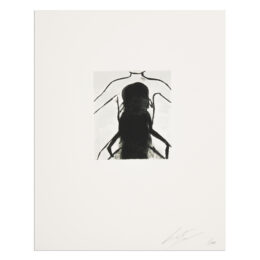

The Belgian painter Luc Tuymans was born in 1958 in Mortsel, near Antwerp. He studied fine arts in Brussels and Antwerp between 1976 and 1982, before graduating from the Free University in 1986 with a degree in Art History. His work was first introduced in the 1990s and was quickly recognised as a major alternative to the ‘comeback’ of figurative painting that characterised the 1980s. An obscure neo-expressionist, Luc Tuymans proposes a double reflection on the painting and the confrontation with photography. His paintings are falsely disparate and always convey a sense of distance.
Luc Tuymans is often described by his contemporaries ‘as a master of everyday life’ because of his use of a very small amount of paint and the wide range of subjects he deals with – from political figures and celebrities to desolate landscapes, abandoned villas, lampshades and potted plants and pillowcases. Some details in his paintings are more refined and denounce a more sinister dimension, such as historical barbarism, collective trauma and the modern mass media. His work deals with the profound abyss between memory and reality as well as the division between personal space and public space. His paintings have been exhibited in many museums around the world such as the Museum of Modern Art in New York and the Kunsthalle in Bern. He has also participated in major international exhibitions including Documenta IX in 1992 and the Venice Biennale in 2001. In 2011, he organised a solo exhibition at the Palais des Beaux-Arts in Brussels.